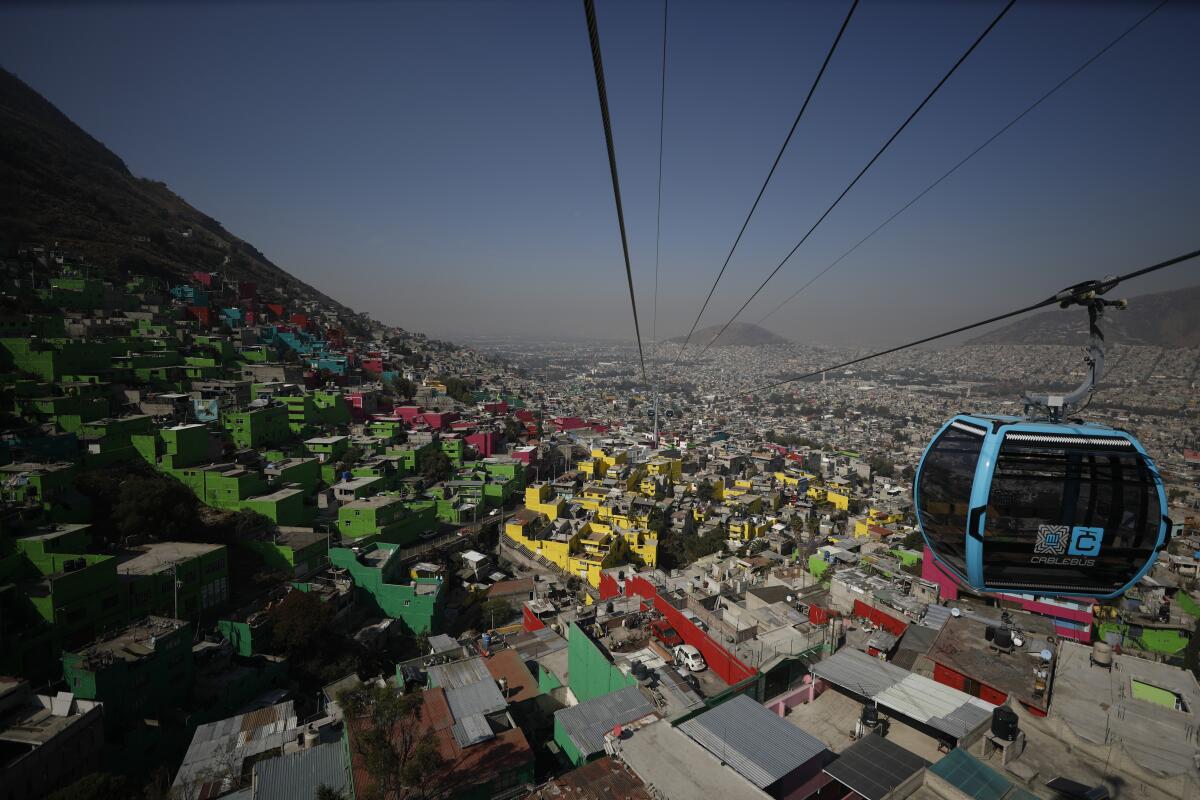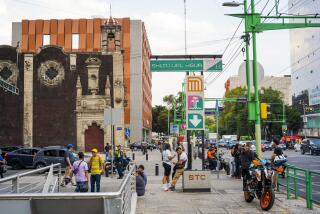Mexico City launches Latin America’s latest aerial tramway

- Share via
MEXICO CITY — Mexico City has launched the first of what it hopes will be several aerial tramways serving the poorer outskirts of the city of 9 million.
Thursday’s inauguration of the first leg of the “Cablebus” line marks the latest chapter in Latin America’s love affair with sky trams, which are seen in much of the world as largely for tourists and ski slopes.
The neighboring State of Mexico already has a tramway serving one northern Mexico City suburb, and the city’s own first line was also built on the poor, crowded north side.
Sky trams are seen as a cheaper, quicker way to bring public transport to poor communities located high up hillsides. Since they’re airborne, the lines also don’t have as many problems with Latin America’s notoriously difficult issues of chaotic development, bad traffic and lack of rights-of-way.
By June, the line will run almost six miles from Cuautepec, a working-class neighborhood on the northern edge of Mexico City, to the nearest subway and bus station. The stretch inaugurated Thursday covers 1.06 miles of that route, to the neighborhood of Tlalpexco.
At present, officials explained, residents at the top of the hill in Tlalpexco have to board crowded, small vans that travel much more slowly. Plus, they don’t have the view the sky trams offer from their windowed cars that can seat 10 passengers at a time. The cars run on electricity and can travel about 13 miles per hour, far faster than most traffic in the city.
“There are nearly a million inhabitants living in the area around the Cablebus, and they make their trips in small vans that descend through narrow streets, and that may take, from the highest point … as long as 55 minutes or an hour,” said Guillermo Calderon, director of Mexico City’s electrical transportation system.
Traditional transport solutions like bus or subway lines are almost impossible here, both because there are no rights of way in the densely packed slums and because they are crowded along hillsides on steep 15-degree slopes.
Mayor Claudia Sheinbaum said a second aerial tramway is being built in Iztapalapa, another working-class neighborhood, to the east.
“Having the best transportation for the poorest parts of the city reduces inequality,” Sheinbaum said.
Cuautepec resident Evelyn Sánchez said that, like most people here, her biggest challenge is getting to the nearest subway station.
“It does take us a long time, and now with this … it is going to be a lot quicker,” Sánchez said.
The city of Medellin, Colombia, launched its aerial tramway in 2004. Since then, many other Latin American cities have followed suit, including Rio de Janeiro and La Paz, Bolivia.
More to Read
Sign up for Essential California
The most important California stories and recommendations in your inbox every morning.
You may occasionally receive promotional content from the Los Angeles Times.










